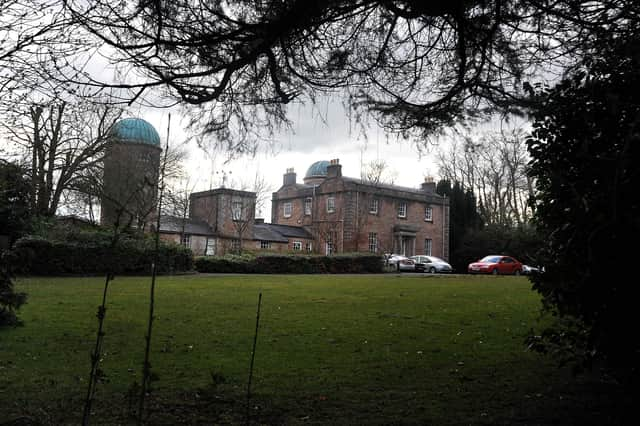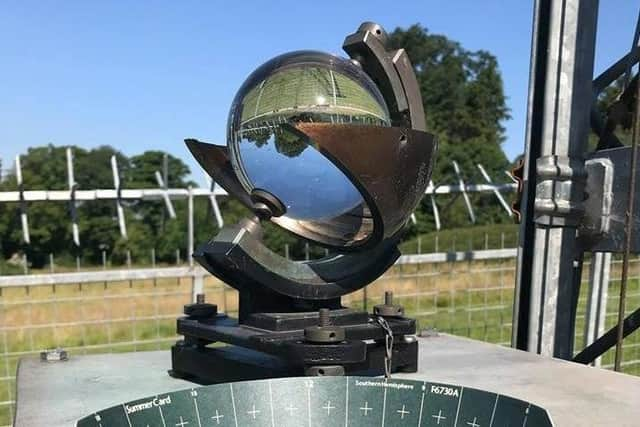Armagh Observatory records ‘very mild November’


This was the warmest November at Armagh for six years and the driest for 32 years.
Taking September, October, and November together the meteorological autumn was exceptionally mild, the warmest autumn at Armagh on record, and both duller and drier than average.
Advertisement
Hide AdAdvertisement
Hide AdThe mean November temperature was 8.2 Celsius (46.8 Fahrenheit), slightly warmer than the average for the previous year and the warmest November at Armagh for six years, that is, since November 2015 (8.7 C).


November 2021 was 2.0 C warmer than the 225-year long-term (1796-2020) average at Armagh (6.2 C) and nearly 0.9 C warmer than most recent (1991-2020) 30-year average (7.3 C).
Mean November temperatures have increased significantly during the last 30 years or so, for example the (1961-1990) 30-year average was just 6.1 C.
The warmest day (highest maximum air temperature) was 15.3 C on the 8th, followed by 14.2 C on the 14th.
Advertisement
Hide AdAdvertisement
Hide AdThe coldest day (lowest maximum air temperature) was 4.8 C on the 27th, followed by 6.4 C on the 26th.
The warmest night (highest minimum air temperature) was 10.7 C on the 9th, followed by 10.6 C on the 19th.
The coldest night (lowest minimum air temperature) was -0.4 C on the 22nd, followed by 1.0 C which occurred on the evening of the 24th.
There were 10 ground frosts, the coldest of which were -6.1 C on the 22nd and -5.1 C on the 25th, and just one night with air frost (minimum air temperature less than or equal to zero), namely -0.4 C on the 22nd.
Advertisement
Hide AdAdvertisement
Hide AdAssociated with this mild November was the observation of grass growth throughout the period and of leaves remaining on some trees right up to the end of the month.
November was also a relatively calm month.
The first named storm of the winter, that is, storm Arwen, occurred only towards the end of the month (on the 26th), but apart from a brief hail shower that evening no serious adverse weather was reported from around Armagh.
Total November precipitation was just 34.45 mm (1.36 inches), including 7 trace values, and therefore 34.10 mm if trace values are ignored.
This is slightly less than half the 183-year long-term (1838-2020)
Advertisement
Hide AdAdvertisement
Hide Adaverage November precipitation at Armagh (73.85 mm) and 42% of the most
recent (1991-2020) 30-year average (81.87 mm).
The wettest day was the 8th with 9.1 mm of rainfall followed by the 30th with 7.5 mm.
A brief hail shower was reported on the 26th.
This was the driest November at Armagh for 32 years, that is, since November 1989 (25.2 mm).
The Observatory demesne comprises a haven for inner-city wildlife.
Advertisement
Hide AdAdvertisement
Hide AdThe observer recorded a crow harrying a kestrel on the afternoon of the 11th and a lone gull overhead on the mornings of the 1st and 19th.
A group of several gulls was observed on the morning of the 30th and unusually a flight of ten gulls in a “V” formation heading north-east during late afternoon on the 23rd.
That same afternoon a jay was seen in the Astropark.
There were 49.7 hours of strong sunshine, which is nearly 17% less than the 140-year long-term (1881-2020) average number of hours of strong November sunshine at Armagh (59.5 hours) and nearly 20% less than the most recent (1991-2020) 30-year average (61.6 hours).
The sunniest days were the 9th, with 5.0 hours of strong sunshine, and the 1st (4.5
hours).
Advertisement
Hide AdAdvertisement
Hide AdTaking the three months September, October, and November together, the meteorological autumn at Armagh was exceptionally mild.
A record-breaking warm September and a warmer than average October contributed to this being the warmest autumn at Armagh since daily temperature measurements began at the Observatory more than 226 years ago.
The average autumn temperature was approximately 11.9 C (53.4 F), a little over 0.2 C warmer than the previous mildest autumn at Armagh (approximately 11.7 C in 2011).
This was 2.5 C more than the 225-year long-term (1796-2020) autumn average at Armagh and 1.5 C more than the most recent (1991-2020) 30-year average.
Advertisement
Hide AdAdvertisement
Hide AdThe five warmest autumns at Armagh are now 2021 (11.91 C), 2011 (11.68 C), 2006 (11.53 C), 2007 (11.40 C) and 2001 (11.36 C), all within the last 20 years.
Total autumn precipitation was 191.30 mm (7.53 inches).
This is approximately 14% less than the 183-year long-term (1838-2020) autumn average at Armagh (223.2 mm) and approximately 16% less than the most recent (1991-2020) 30-year average (227.9 mm).
This was the driest autumn at Armagh for three years, that is, since autumn 2018 (174.7 mm).
There was a total of 231.1 hours of strong sunshine this autumn, nearly 11% duller than the 140-year long-term (1881-2020) average at Armagh (258.8 hours) and almost 14% duller than the most recent (1991-2020) 30-year average (267.9 hours).
Advertisement
Hide AdAdvertisement
Hide AdThis was the dullest autumn at Armagh for 10 years, that is, since autumn 2011 (225.6 hours).
These data refer to observations at Armagh Observatory, which has been recording the weather at Armagh since 1795.
Comment Guidelines
National World encourages reader discussion on our stories. User feedback, insights and back-and-forth exchanges add a rich layer of context to reporting. Please review our Community Guidelines before commenting.